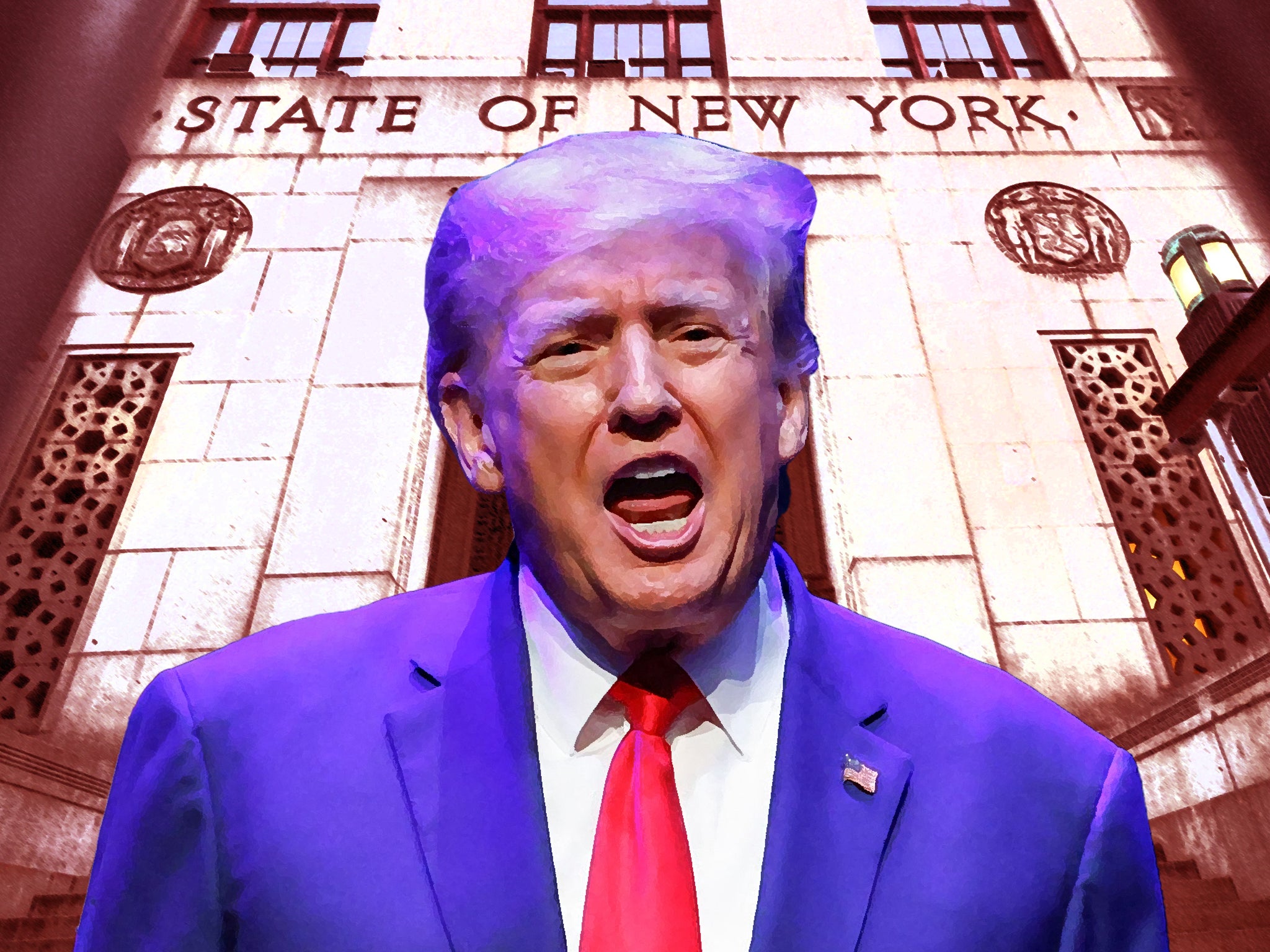The danger of those Trump ‘deepfake’ images
The response to AI-generated viral images of the former president’s arrest signal the potential for disinformation campaigns that could sow media chaos, according to experts. Alex Woodward reports


Your support helps us to tell the story
From reproductive rights to climate change to Big Tech, The Independent is on the ground when the story is developing. Whether it's investigating the financials of Elon Musk's pro-Trump PAC or producing our latest documentary, 'The A Word', which shines a light on the American women fighting for reproductive rights, we know how important it is to parse out the facts from the messaging.
At such a critical moment in US history, we need reporters on the ground. Your donation allows us to keep sending journalists to speak to both sides of the story.
The Independent is trusted by Americans across the entire political spectrum. And unlike many other quality news outlets, we choose not to lock Americans out of our reporting and analysis with paywalls. We believe quality journalism should be available to everyone, paid for by those who can afford it.
Your support makes all the difference.In imaginary images created by an artificial intelligence programme with a researcher’s prompts, police officers chase and tackle Donald Trump. Others show the former president behind bars and wearing an orange jumpsuit in federal prison.
The images, generated by Bellingcat founder Eliot Higgins using the powerful text-to-image Midjourney programme, exploded across social media while a New York grand jury considers evidence in a criminal investigation into the former president, who has predicted his imminent indictment and arrest.
They served as a high-profile example of the kinds of viral phenomena relying on false images built with artificial intelligence programmes that could be used to spread harmful disinformation to spark unrest and disrupt news cycles and elections.
Democratic US Senator Mark Warner told The Washington Post that lawmakers have issued similar warnings about the potential for synthetic media to “spread disinformation and more generally to sow confusion and discord.”
Mr Warner, the chair of the Senate Intelligence Committee, said that the technology is now at a point where “these tools are widely available and incredibly capable.”
“As we have all seen, it is so much easier to make fake videos and fake images and make them look really realistic,” Vwani Roychowdhury, a professor at UCLA Samueli School of Engineering, told HuffPost. “Whether it’s the correct information or socially acceptable information or misinformation, in my opinion, they’re all embedded as part of a narrative.”
The viral images followed at least two other high-profile faked images involving US elected officials that spread across social media, prompting platforms – which have faced criticism for varying responses and policies governing disinformation and potentially disruptive AI images – to take action.
Last month, a faked video that spread virally on Twitter appeared to show Democratic US Senator Elizabeth Warren claiming that Republicans should not be allowed to vote. The social media platform applied a label to the video as “altered audio,” and one account that amplified the video was later suspended.
Far-right activist Jack Posobeic also posted a so-called “deepfaked” video of President Joe Biden announcing the reinstatement of a military draft for Americans to combat Russia’s war on Ukraine.
Mr Posobeic labelled the video a “sneak preview of things to come.” Twitter applied a label noting that the video was “a ‘deepfake’ created with the aid of artificial intelligence.”
In an appearance at the closely watched Conservative Political Action Conference earlier this month, he defended the video’s creation and the entirely made-up scenario. “Conservatives have to stop being scared” of news outlets and fact-checking, he said. “Screw them all.”
Though the images created by Mr Higgins were clearly intended to be fakes, their vast spread and presentation by some bad-faith actors indicates that “there’s been a giant step forward in the ability to create fake but believable images at volume,” according to Sam Gregory, executive director of the human rights organization Witness, speaking to The Washington Post.
“And it’s easy to see how this could be done in a coordinated way with an intent to deceive,” he added.
“It does not really matter whether someone does fact-checking…. Because the damage has been done,” Mr Roychowdhury told HuffPost.
Brandeis Marshall, CEO of DataedX and a professor of computer science at Spelman College, told HuffPost that the spread of such images could be construed as an “intentional bad act” and a “calculated strategy” to incite supporters, while Mr Trump’s “well-executed disinformation campaign” predicting his own arrest has also drawn attention away from other news that is not being reported.
The Poynter Institute’s Al Tompkins offered a checklist to determine whether increasingly sophisticated AI imagery is real, including seeing whether the creator disclosed how the image was captured, if there’s a watermark, and for other “oddities” in the image.
Meanwhile, as NPR noted in coverage leading into the 2020 presidential election,and fears that emerging “deepfake” technology could throw campaigns into chaos, disinformation already is able to spready rapidly through partisan narratives, deceptive editing or outright lies that have worked just as well to advance certain causes.




Join our commenting forum
Join thought-provoking conversations, follow other Independent readers and see their replies
Comments